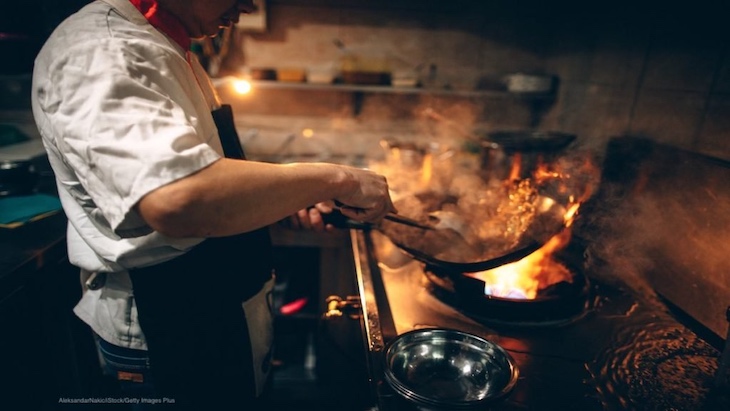Restaurants are included in a Salmonella outbreak that has sickened at least 127 people in 25 states, according to the Centers for Disease Control and Prevention (CDC). The government does not yet know which food item caused this outbreak, or if there is another cause.

Eighteen people, out of 49 that gave information to health officials, have been hospitalized, which is a rate of 37%, almost double the typical Salmonella outbreak rate. This could mean that more vulnerable people were sickened, or that the pathogen is quite virulent, or that the pathogen load in the food was quite high.
The CDC has stated that several subclusters at restaurants in multiple states have been identified. These subclusters can help officials solve outbreaks, since they can use traceback from restaurant supplier purchases to try to identify a common food.
A Salmonella outbreak at La Mex restaurant in Morris, Illinois may be part of a multistate outbreak, according to the Grundy County Health Department. But there is no official word on whether that outbreak is part of this larger one.
Food outbreaks at restaurants are common. Restaurants are linked to foodborne illnesses more often than any other place where food is prepared, the CDC said in 2017. In fact, a 2014 study found that the combination of chicken and food safety training in restaurants is an issue, since many restaurants do not follow thee FDA Food Code regarding cross-contamination.
Chicken is a common source of foodborne illness outbreaks, especially Salmonella outbreaks. In that study, 40% of managers said they “never, rarely, or only sometimes designate certain cutting boards for raw meat.” One-third said they did not wash and rinse surfaces before sanitizing them. More than half of the restaurant managers said thermometers weren’t used to check the final internal temperature of chicken. More than half of those managers did not even know the safe final internal temperature of cooked chicken. Finally, more than 50% of the managers rinsed or washed raw chicken before cooking, which creates cross-contamination in the food preparation area since the bacteria aerosolize under the water stream.
And restaurant chains, which order food from a common supplier, can contribute to multistate outbreaks since that food, if contaminated, can sicken more people across a wide area.
There are ways to protect yourself when you eat out at restaurants. First, if you can, check the restaurant’s inspection scores, that are posted online by many cities. See if the restaurant posts a certificate showing that its managers are trained in food safety. When you order, avoid food that is not fully cooked or potentially problematic, such as raw oysters, raw sprouts, or undercooked eggs, avoid lukewarm food, and ask your server about the kitchen’s food safety practices.
If you do get sick after eating at a restaurant, save any food that may be leftover and don’t eat it. Write down what you ate and what others in your party ate. And see your doctor to be tested for infection.

If you or a loved one have been sickened with a Salmonella infection after eating at a restaurant, please contact our experienced attorneys for help at 1-888-377-8900 or 612-338-0202.




